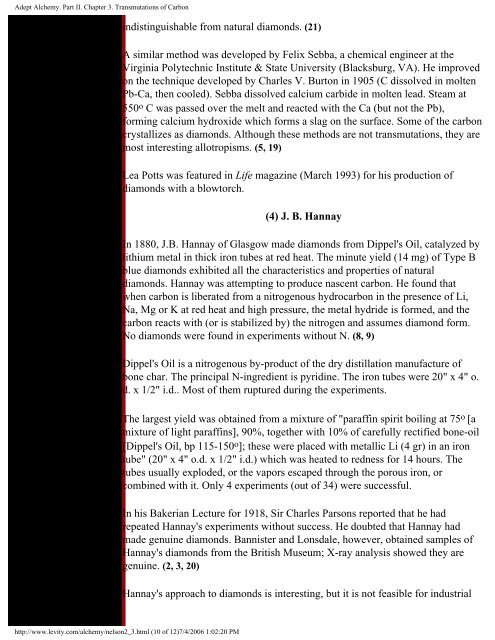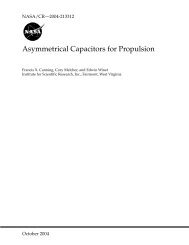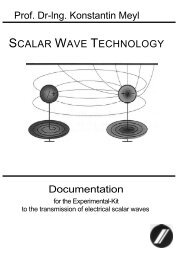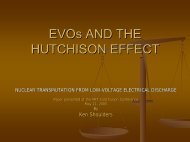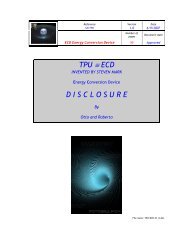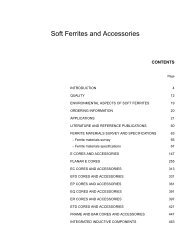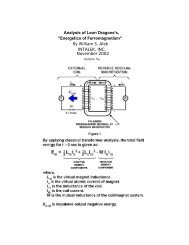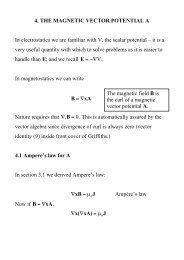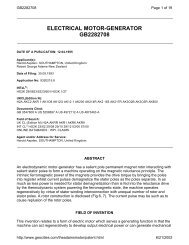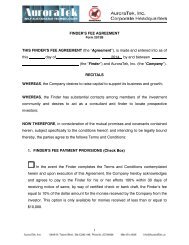The Transmutations of Carbon
The Transmutations of Carbon
The Transmutations of Carbon
Create successful ePaper yourself
Turn your PDF publications into a flip-book with our unique Google optimized e-Paper software.
Adept Alchemy. Part II. Chapter 3. <strong>Transmutations</strong> <strong>of</strong> <strong>Carbon</strong>indistinguishable from natural diamonds. (21)A similar method was developed by Felix Sebba, a chemical engineer at theVirginia Polytechnic Institute & State University (Blacksburg, VA). He improvedon the technique developed by Charles V. Burton in 1905 (C dissolved in moltenPb-Ca, then cooled). Sebba dissolved calcium carbide in molten lead. Steam at550 o C was passed over the melt and reacted with the Ca (but not the Pb),forming calcium hydroxide which forms a slag on the surface. Some <strong>of</strong> the carboncrystallizes as diamonds. Although these methods are not transmutations, they aremost interesting allotropisms. (5, 19)Lea Potts was featured in Life magazine (March 1993) for his production <strong>of</strong>diamonds with a blowtorch.(4) J. B. HannayIn 1880, J.B. Hannay <strong>of</strong> Glasgow made diamonds from Dippel's Oil, catalyzed bylithium metal in thick iron tubes at red heat. <strong>The</strong> minute yield (14 mg) <strong>of</strong> Type Bblue diamonds exhibited all the characteristics and properties <strong>of</strong> naturaldiamonds. Hannay was attempting to produce nascent carbon. He found thatwhen carbon is liberated from a nitrogenous hydrocarbon in the presence <strong>of</strong> Li,Na, Mg or K at red heat and high pressure, the metal hydride is formed, and thecarbon reacts with (or is stabilized by) the nitrogen and assumes diamond form.No diamonds were found in experiments without N. (8, 9)Dippel's Oil is a nitrogenous by-product <strong>of</strong> the dry distillation manufacture <strong>of</strong>bone char. <strong>The</strong> principal N-ingredient is pyridine. <strong>The</strong> iron tubes were 20" x 4" o.d. x 1/2" i.d.. Most <strong>of</strong> them ruptured during the experiments.<strong>The</strong> largest yield was obtained from a mixture <strong>of</strong> "paraffin spirit boiling at 75 o [amixture <strong>of</strong> light paraffins], 90%, together with 10% <strong>of</strong> carefully rectified bone-oil[Dippel's Oil, bp 115-150 o ]; these were placed with metallic Li (4 gr) in an irontube" (20" x 4" o.d. x 1/2" i.d.) which was heated to redness for 14 hours. <strong>The</strong>tubes usually exploded, or the vapors escaped through the porous iron, orcombined with it. Only 4 experiments (out <strong>of</strong> 34) were successful.In his Bakerian Lecture for 1918, Sir Charles Parsons reported that he hadrepeated Hannay's experiments without success. He doubted that Hannay hadmade genuine diamonds. Bannister and Lonsdale, however, obtained samples <strong>of</strong>Hannay's diamonds from the British Museum; X-ray analysis showed they aregenuine. (2, 3, 20)Hannay's approach to diamonds is interesting, but it is not feasible for industrialhttp://www.levity.com/alchemy/nelson2_3.html (10 <strong>of</strong> 12)7/4/2006 1:02:20 PM


